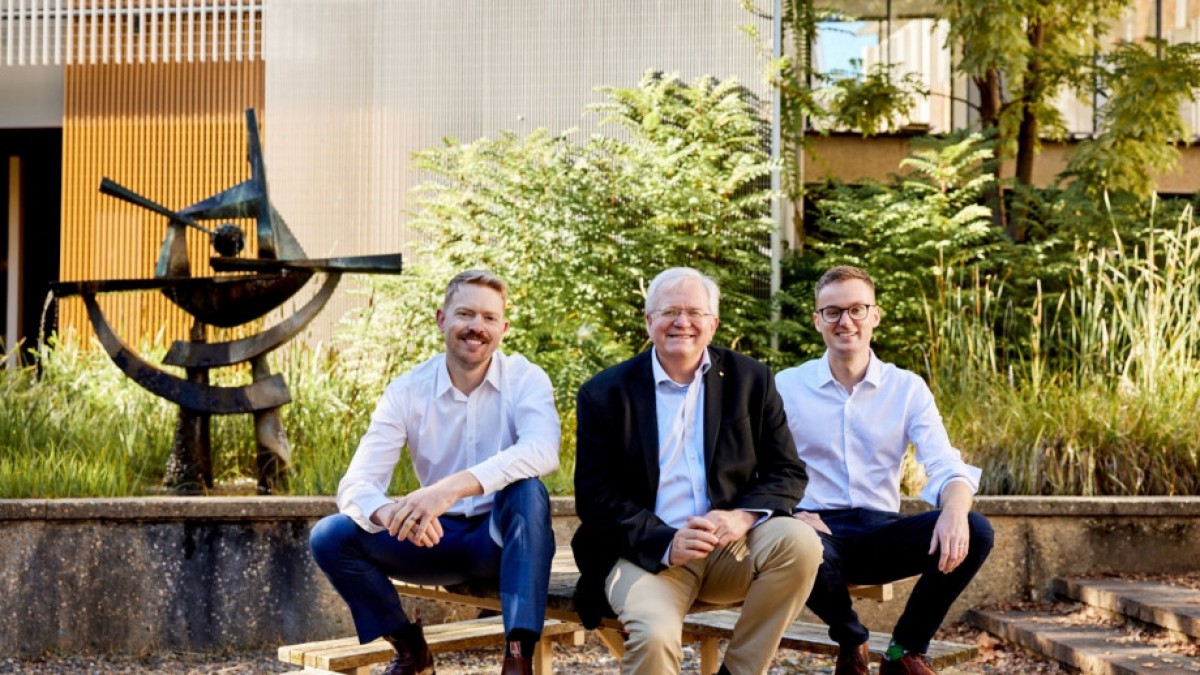Tech spin-out to power next-gen autonomous navigation
An ANU spin-out company whose technology will help future moon landings and could one day lead to flying cars has been bought out by one of Australia's leading navigation firms in a deal worth $40 million.
Vai Photonics was established in 2021 by Dr Lyle Roberts from the Research School of Physics and PhD graduate James Spollard from the Centre for Gravitational Astrophysics. The company has been acquired by Sydney-based robotics and artificial intelligence company Advanced Navigation.
The team of seven engineers at Vai Photonics builds sensors that enable vehicles to navigate with precision and confidence when GPS is either unavailable or unreliable. The technology is based on lasers used to hunt down gravitational waves.
The team's technology, which has been developed at ANU over 10 years, will be used to help drive Advanced Navigation's work on sensors for navigation and robotics, as well as autonomous applications across land, air, sea and space.
ANU Vice-Chancellor Professor Brian Schmidt congratulated the Vai Photonics team on the company's acquisition.
"Vai Photonics is another great ANU example of how you take fundamental research - the type of thinking that pushes the boundaries of what we know - and turn it into products and technologies that power our lives," Professor Schmidt said.
"The work that underpins Vai Photonics' advanced autonomous navigation systems stems from the search for elusive gravitational waves - ripples in space and time caused by massive cosmic events like black holes colliding.
"The team have built on a decade of research and development across advanced and ultra-precise laser measurements, digital signals and quantum optics to build their innovative navigation technology.
"We are proud to have backed Vai Photonics through our Centre for Gravitational Astrophysics and business and commercialisation office. It's really exciting to see the team take another major step in their incredible journey."
The Vai Photonics team has been integrated into Advanced Navigation's research and development team, based out of a new Canberra research facility.
Dr Roberts said the acquisition was "a huge win for the Vai Photonics team".
"Together with Advanced Navigation we are able to bring our product to market much faster than originally planned," he said.
"We now have access to leading research and development facilities along with strong distribution channels. We couldn't have asked for a better outcome and look forward to navigating the future with Advanced Navigation."
Mr Spollard said Vai Photonics technology, based on photonics or the measurement and detection of light, was improving precision navigation.
"Precision navigation when GPS is unavailable or unreliable is a major challenge in the development of autonomous systems," he said.
"Our emerging photonic sensing technology will enable positioning and navigation that is orders of magnitude more stable and precise than existing solutions in these environments.
"By combining laser interferometry and electro-optics with advanced signal processing algorithms and real-time software, we can measure how fast a vehicle is moving in three dimensions."
Mr Xaiver Orr, co-founder and CEO of Advanced Navigation, said Vai Photonics' technology would help drive the autonomy revolution.
"The synergies, shared vision and collaborative potential we see between Vai Photonics and Advanced Navigation will enable us to be at the absolute forefront of robotic and autonomy driven technologies," Mr Orr said.
"Photonic technology will be critical to the overall success, safety and reliability of these new systems. We look forward to sharing the next generation of autonomous navigation and robotic solutions with the global community."
Vai Photonics has been supported with seed funding from the ANU Research School of Physics Technology Development Fund; the ANU Connect Ventures Discovery Translation Fund; OzGrav, the ARC Centre of Excellence for Gravitational Wave Discovery; and EQUS, the ARC Centre of Excellence for Engineered Quantum Systems.

